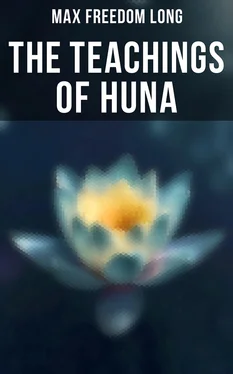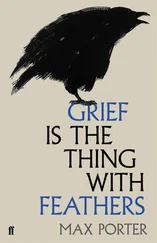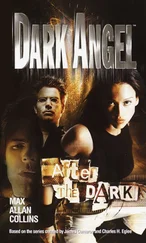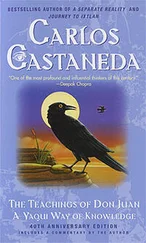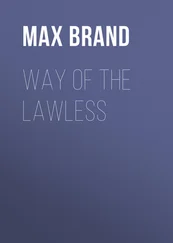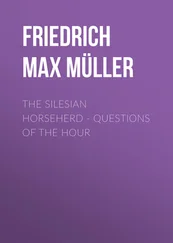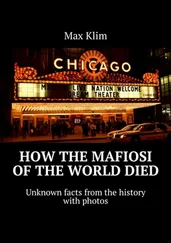1 ...8 9 10 12 13 14 ...23 The camera flashed back again to catch the next candidate.
"Was that second man burned?" I faltered. "No. Only three got burned out of the whole bunch," was the abstracted answer. "Watch this one," he commanded.
A very bent and feeble old man had entered the fire. His hands were stretched imploringly upward. After the first few steps he began staggering. He hesitated, leaped into the air, plunged wildly forward and fell. Instantly attendants were at the side of the bed of coals, long drag-hooks in their hands. They labored frantically, rolling the smoking body over and over. They dragged it clear, coals sticking to the burned flesh. A jar of water was dashed over the still form and it was lifted and carried swiftly away.
"Dead before they got him out …" said a low voice at my elbow. I started slightly, having momentarily forgotten my friend. "But that didn't stop them; they kept going right through."
Again a splice ran through the projector and the camera swung back from a man being lashed. It picked up another man at the far end. He had just stepped into the fire and in his arms he carried a boy. The child was hardly more than six and dressed in loin-cloth only. I gasped in horror. Why should a child be endangered? What if the big lean man should fall? Again I held my breath. Would the man never start running? Was he insane?
"He'll make it," my friend encouraged me.
I sank back into my chair. On and on the man went, striding deliberately. The little boy became vague and clear by turns, as the heat shimmer was stirred or left stagnant by air currents. One small hand lay quietly and confidingly on the bare shoulder of the man. The boy gave no sign of fear or concern. Never quickening or slackening his pace, the man came at last to the end. He stepped into the water. The whips fell but once on his back. He lifted the boy high to keep him from being struck. In his gesture was something that hinted of a love great in its triumph. The camera followed as he set the child on his feet and led him away toward the wall.
Suddenly the film began to change rapidly from scene to scene. Men ran or walked a few feet through the fire before vanishing.
"I was running short of film," explained the voice in my ear. "I just took grab shots. But now watch—I got another of those who got burned.… There he goes! Off at the side—howling—now he's into the water. No use to beat him. The priest said he'd never walk again. Now keep an eye on this—see that Sikh? See what happened? The crowd went crazy—religious frenzy—they wanted to try it themselves. See those Sikhs with their clubs! What if they hadn't been there to lay them out? The whole crowd would have rushed into the fire!"
Suddenly the film clicked in the projector and the screen flickered blank and white. The picture was ended.
"How do you feel?" asked the Englishman curiously.
"Rather upset," I answered truthfully.
"And wasn't I!" he exclaimed. "I'd seen it with my own eyes! For a penny I'd have joined the temple. It gets you. I was a week trying to forget it. It's like seeing a ghost or something. Can't get your mind straightened out. You go giddy. Can't strike the old balance. Keep wondering if you have everything wrong.… Can't get over the idea that there's something in it besides a trick."
"Then you really believe it is a trick?" I asked.
There was a long moment of hesitation. "What else can it be? … But how could the beggars put anything on their feet that wouldn't wear off in a half-day of parading barefoot? … And how was it some of them got burned if they all had the same stuff on their feet to protect them?"
"Perhaps they know better than we do what's behind it," I suggested.
There was a slow nod. "I almost joined the temple … just to find out if there was.…"
Comment:
In this case it would seem that the priests did not use magic in behalf of the fire-walkers, but let them use their own powers as best they might. It is evident that some were not yet good magicians, regardless of the religious significance of the matter.
As we shall eventually consider a very important point concerning the nature of "purification" from' sin in its relation to the ability to perform fire-magic, I will now present a short case having to do with descendants of Igorot head-hunters.
Case 5
Descendants Prove that Their Head-Hunting Ancestors Did Fire-Walking Safely
Preliminary Notes:
In the Philippines the Igorots have done fire-walking for centuries. They have also been head-hunters. To waylay the enemy and take his head is not a business which the Burma devotees would consider a help to "purification," but the Igorots seem unaware of this. Here we see descendants of the little pink-brown people using fire-magic with the same success as did their forefathers.
The Case:
Some Igorot fire-walkers came to Los Angles some years ago and gave several performances at the old Chutes Park on Washington Street. My friend, Mr. George Dromgold, saw them at work, and his description of their feats gives us the usual picture of hot rocks, green branches in hands, and bare feet treading on intensely hot stones with no resultant burns.
Comment:
This case is mainly important to show that headhunters have done fire-walking and that the art has come down to the Igorots of our time.
Of secondary importance is the fact that magic can be practised in civilized countries and away from the favorite plant, ti , which is so largely used in the ceremonial throughout Polynesia.
Case 6
A Japanese Healer uses Fire-Magic
Preliminary Notes:
In the preceding cases we have had the two best known forms of fire-magic. For the third we must look to a less widespread, but more practical form: fire-magic used in healing certain types of disease.
The Case:
In 1928-1929 there came to Honolulu a Japanese fire-healer. He advertised his powers and began his healing practice. His specialty was the treatment of arthritis. He would heat stones so hot that they would ordinarily burn flesh. By the use of magic—according to his later admission in court—the stones could be packed around an affected joint and the trouble cured. There were several cases which he had treated successfully, notably the case of a wealthy American who had been unable to walk for several months because of arthritis in the knees. After treatment with the hot stones by the Japanese healer he recovered the full use of his knees.
Comment:
This case is of importance to our study and proofs, because the records of it are preserved in court documents. After practicing for some time in Honolulu, the Japanese was arrested at the instigation of the medical men. He was charged with practicing medicine without a license, but, as he had administered no medicine, the charge pressed against him was that of being a kahuna. 4
The court that tried him was not interested in evidence given to prove that his treatment was effective, when that of local doctors was not. The Japanese offered as his defense the fact that he was using magic and not medicine. Magic is not admitted in evidence in any civilized court. He admitted that he had used burning-hot stones to cure others. That was enough. He was fined and imprisoned as a kahuna. Later he was deported.
Had there been any trickery on the part of the Japanese healer, would it not seem that he would have acknowledged it rather than go to jail for a longer term, because he insisted that he had used real magic? Of course, to deny his magic it would have been necessary for the healer to show how he did the "trick," and this was something impossible for him to do as there was no trick.
Читать дальше
